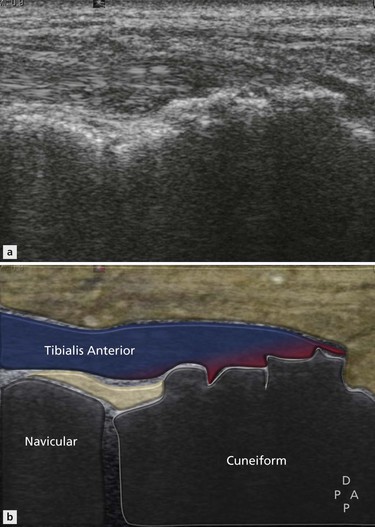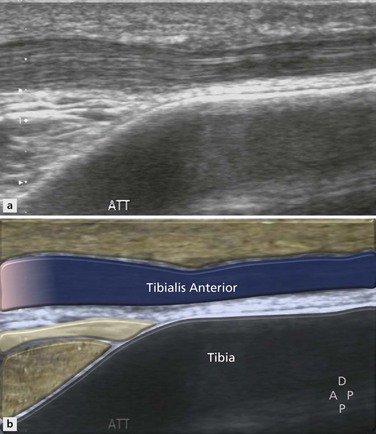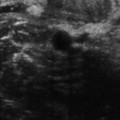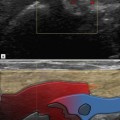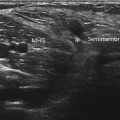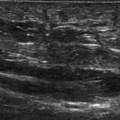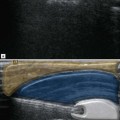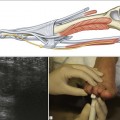Disorders of the Ankle and Foot
Anterior
Tendons
Tibialis Anterior
Anatomy
The tibialis anterior tendon is the strongest of the anterior ankle tendons. Its parent muscle arises from the upper two-thirds of the lateral aspect of the tibia. It has a high musculotendinous junction and a strong distal tendon, which is constrained by a transverse superior and an oblique inferior retinacular band. The relationship of tibialis anterior to the retinacula is complex. The superior retinaculum is band-like and lies at the level of the distal tibia below the musculotendinous junction (Fig. 25.1). This retinaculum represents the anterior portion of a circumferential band of tissue that includes the tarsal retinaculum, overriding the tarsal tunnel, and the superior peroneal retinaculum laterally. In cross section, there may be two components, superficial and deep, with the tibialis anterior tendon passing in a tunnel between them. This tunnel may also separate tibialis anterior from the other extensor tendons. The oblique inferior retinaculum comprises two bands, a superomedial and an inframedial, which unite to form a single lateral attachment. The tibialis anterior tendon passes deep to the oblique inferomedial ligament just prior to its insertion into the medial cuneiform. The tendon insertion is quite far medial onto a facet of the medial cuneiform and base of the first metatarsal.
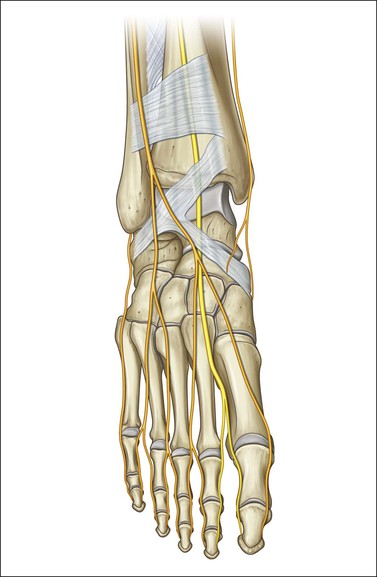
Figure 25.1 Retinacular anatomy on the dorsum of the ankle. Modified from Drake RL, et al. (eds). Gray’s Atlas of Anatomy, 1st edn. Philadelphia, PA: Churchill Livingstone, 2008; with permission.
Tenosynovitis and Tendinopathy
The earliest changes are found around the tendon where it abuts the retinacula. Fluid may gather around the tendon (Fig. 25.2), though it will be constrained in the area where the retinaculum compresses it (Fig. 25.3). With progression, the tendon itself becomes involved, leading to thickening and decreased reflectivity (Fig. 25.4).
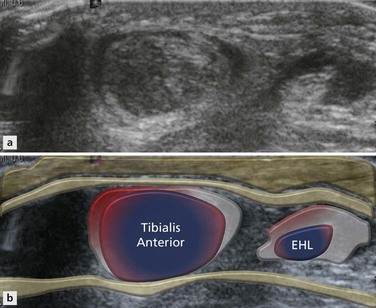
Figure 25.2 Axial image of anterior ankle. Fluid is present around the tibialis anterior tendon which is thickened and shows decreased reflectivity, indicative of tenosynovitis and tendinopathy. There is also fluid around extensor halluces longus (EHL).
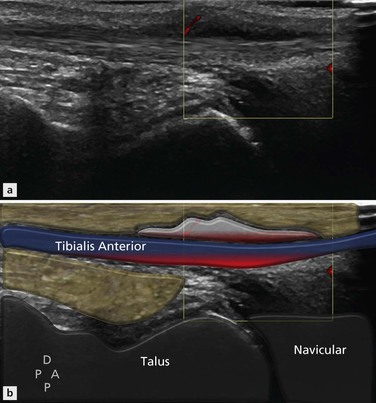
Figure 25.3 Sagittal image of anterior ankle. There is thickening of the superior retinaculum (grey) and fluid within the tendon sheath.
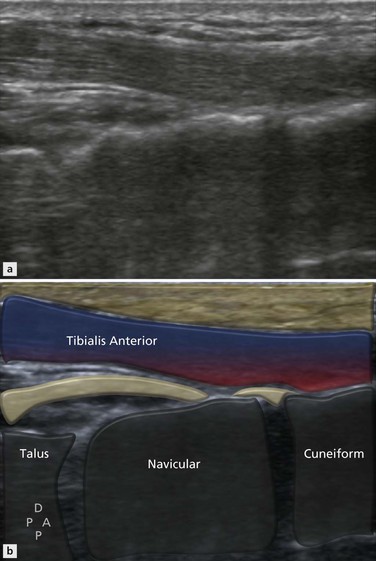
Figure 25.4 Sagittal image of anteromedial midfoot. There is thickening and loss of reflectivity of the tibialis anterior tendon consistent with tendinopathy.
In some cases, the tibialis anterior tendon synovial sheath may be uninvolved, but there is thickening of the retinaculum, leading to a type of stenosing tenosynovitis (Fig. 25.5).
Tibialis Anterior Enthesopathy
Isolated enthesopathy may involve the distal portion of tibialis anterior tendon at its insertion.
New bone formation may be present with bony ingrowth into the tendon (Fig. 25.6). Tendon hypertrophy and increased Doppler signal may also be detected by ultrasound. Comparison with the asymptomatic contralateral side may be helpful. Focal tenderness will also help to differentiate the clinically involved tendon.
Tendon Rupture
Symptoms of anterior tibialis tendon rupture are often subtle. This is because the loss of dorsiflexion resulting from the injury may be compensated by other tendons. A common presentation is with an anterior mass (Fig. 25.7), often sufficiently prominent to lead to concerns that a soft tissue tumour is present (Fig. 25.8). The mass is due to a combination of fibrosis in the extensor retinaculum and the torn lax tendon. Other ultrasound findings include a tapering appearance to the tendon end (Fig. 25.9) and retraction (Fig. 25.10).
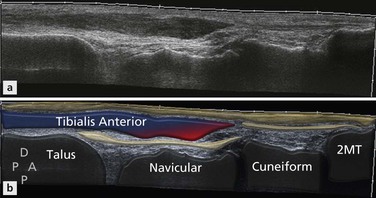
Figure 25.7 Sagittal extended field of view image. There is a tear of the tibialis anterior tendon that has retracted proximally to the level of the naviculocuneiform joint.

Figure 25.8 Anterior tibialis tendon tear. The combination of tendon retraction and retinacular thickening creates an anterior ankle mass sometimes misdiagnosed as sarcoma.

Figure 25.9 Sagittal images of a tibialis anterior tendon tear. The tendon end has retracted to the level of the tibiotalar joint. Osteophytes and erosions lead to bony irregularity which may contribute to tendon rupture.

